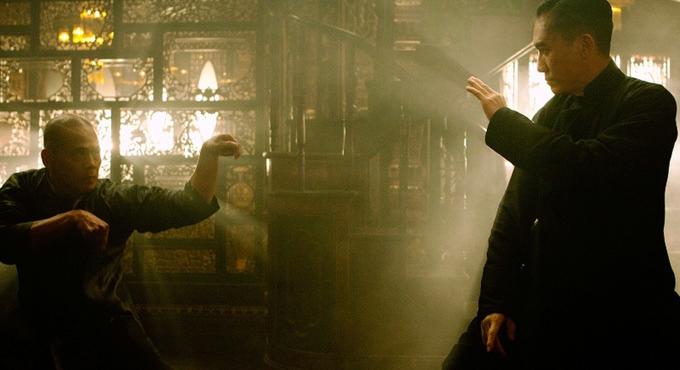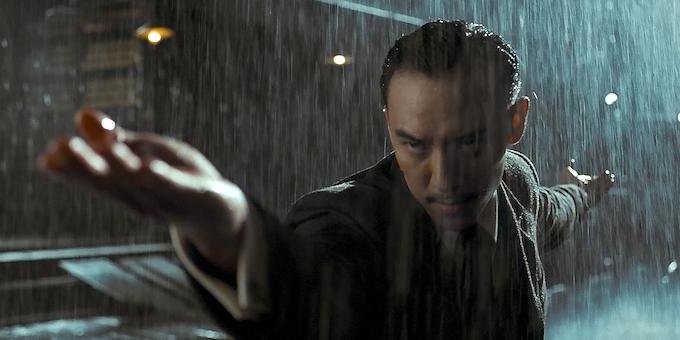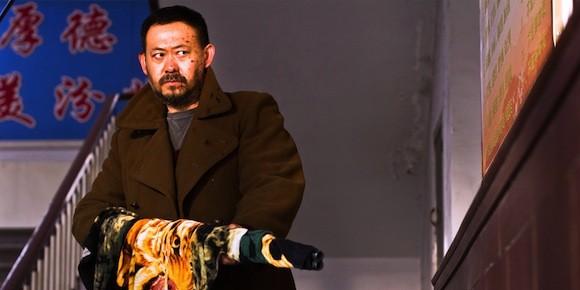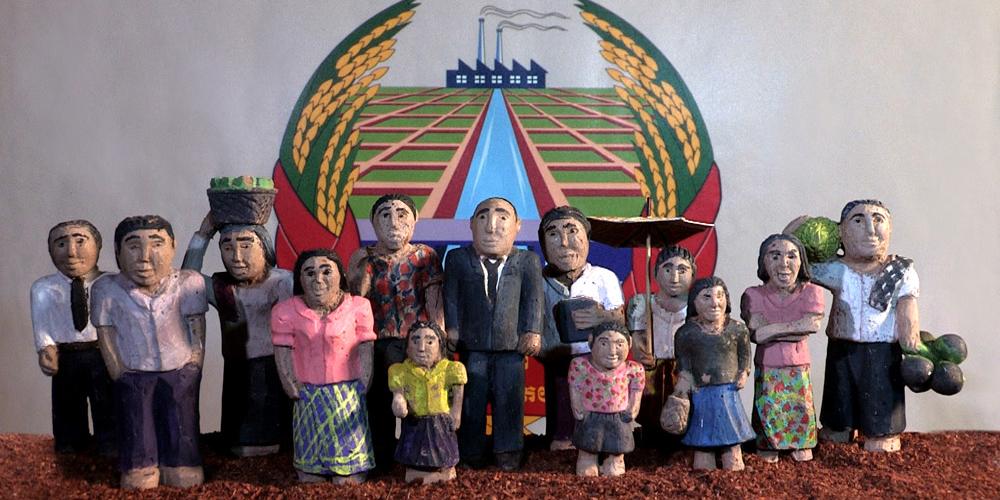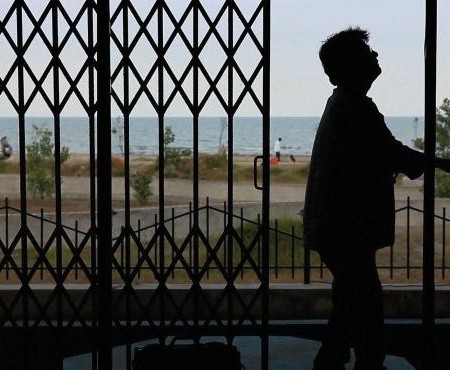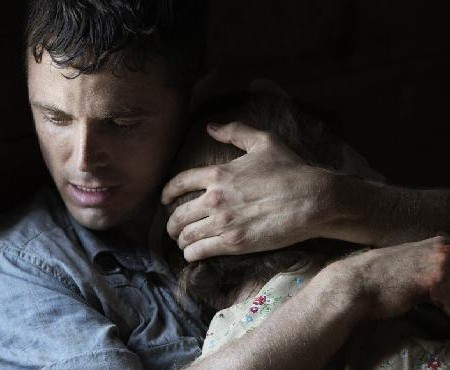With the 48th Karlovy Vary International Film Festival now well and truly in the rear-view mirror, it’s time for my (belated) final dispatch. After a week full of mostly European and North American features, the last two days brought with them a trio of Asian productions, including the highly anticipated martial arts flick from celebrated Hong Kong auteur Wong Kar-wai.
Before I get to that, however, it’s worth mentioning the festival’s prize winners. I unfortunately missed my chance to see János Szász’s Grand Prix winning Le grand cahier, but I did catch the winner of the Special Jury Prize, the psychedelic A Field in England, and even had the opportunity to interview its director, Ben Wheatley. I also got to interview first time director Lance Edmands, whose film Bluebird deservedly took home the Best Actress award, split between its four female primaries, Amy Morton, Louisa Krause, Emily Mead and Margo Martindale (the film also won the Ecumenical Jury Prize). Best Actor, meanwhile, went to Ólafur Darri Ólafsson for his role in Marteinn Þórsson’s XL.
The local Czech film industry was represented by Jan Hřebejk, who took home the Best Director prize for the psychologically unsettling The Honeymoon (perhaps my favourite film of the festival), as well as by the Czech-Russian-German coproduction Pipeline, which claimed the gong for Best Documentary, and the Audience Award winning Revival.
THE GRANDMASTER (Dir. Wong Kar-wai)
Grade: B
While it’s not necessarily a standout in either the annuls of recent kung-fu films or the celebrated filmography of its director, the first film in six years from acclaimed Hong Kong filmmaker Wong Kar-wai, about the legendary Chinese martial artist Ip Man, should nonetheless prove mostly satisfying to fans and admirers of either.
Plot-wise, The Grandmaster covers a lot of the same ground, albeit with much less of an overtly nationalist bias, than the 2008 Donnie Yen action vehicle Ip Man. Wong’s more dramatically inclined retelling begins in the mid nineteen thirties, by which time Ip, played reservedly here by Wong’s regular collaborator Tony Leung, was already well established as one of Southern China’s most respected martial artists.
From there, the film expands outwards, in a sprawling non-linear web, exploring Ip’s experiences during the Japanese occupation of WWII, his relationship with the revenge-bent martial artist Gong Er (played by Zhang Ziyi), and his establishment in the nineteen fifties of Hong Kong’s premier martial arts school (where he would go on to instruct kung-fu movie icon Bruce Lee).
Fans of Wong’s previous films like 2046 and In the Mood for Love will certainly recognise the director’s signature visual style, a blend of elegance and opulence that extends from the immaculate details of the costumes and sets to the rich golden hues of the cinematography. Such lavishness extends also to the action scenes, although admittedly not always to their benefit. The staging of the fights, by master choreographer Yuen Woo-ping (The Matrix, Crouch Tiger Hidden Dragon), is characteristically spectacular. But while Wong is for the most part able to let his camera capture them uninhibitedly, his heavy use of slow-mo and close-ups, artful as they may be, can occasionally prove a distraction.
Narratively the film is strong, although certainly not free of typical biopic shortcomings. While the duelling storylines surrounding Ip and Gong-Er prove consistently engaging, secondary characters and subplots, such as one involving a nationalist agent known as “The Razor”, more often than not feel short-changed. The Grandmaster certainly feels as long as its two plus hour runtime, which is frustrating given how easily certain plot threads could have been severed.
A TOUCH OF SIN (Dir. Jia Zhangke)
Grade: B-
Moments of matter-of-fact brutality make for disturbing punctuation marks in A Touch of Sin, the latest film from acclaimed Chinese sociorealist Jia Zhangke. Split into a series of unconnected episodes, the film takes us into the lives a several different characters living in present day China, each of whom find themselves driven into acts of violence.
While the plot’s disjointed nature makes it difficult to fully invest in the emotional lives of its characters, A Touch of Sin still proves compelling thanks to Jia’s greater thematic concerns. The violence in the film is motivated by a variety of reasons, including outrage, self-defence and the desire to simply escape, but one factor that remains consistent is economic hardship. Indeed, the struggle of ordinary Chinese citizens in the face of their nation’s financial boom is an ongoing preoccupation in Jia’s films, which also include Still Life and The World.
Of course particularly since 2008, class disparity and resentment is hardly a uniquely Chinese concern. There’s an uncomfortable universality to the film’s underlying cynicism, one that will no doubt strike a chord with disenfranchised viewers, no matter their language or nationality.
THE MISSING PICTURE (Dir. Rithy Panh)
Grade: C+
Watching The Missing Picture, the latest documentary from celebrated Cambodian director Rithy Panh, I couldn’t help but think of the his fellow Karlovy Vary 2013 entrant Ari Folman and his own 2008 doc, Waltz with Bashir. Both films employ unconventional aesthetic techniques in order to relay a highly personal recollection of the unimaginable horrors of war. In Folman’s case, vivid, surrealist animation sketches a nightmarish account of his time as a soldier during the 1982 Lebanon war, during which time he became an unknowing accomplice in the Sabra and Shatila civilian massacre.
Panh’s approach is more rudimentary, although in its own way no less ambitious. Using hundreds of hand-painted clay figures, the director crafts a series of still dioramas that relate his childhood experiences in a forced labour camp, under the brutal regime of Communist dictator Pol Pot. Through pensive narration (Panh’s words, spoken by French-Cambodian actor Randal Douc), the filmmaker reflects on life in the camp, including the starvation deaths of his family, as well as the power of film – as a tool of propaganda, a means of escapism, and a method of documentation.
While The Missing Picture is both formally interesting and remarkably, occasionally devastatingly intimate, Panh ultimately fails to develop his material to a wholly satisfactory depth. One thought that comes immediately to mind is how vastly the film might have been improved through a greater exploration of the politics surrounding Pol Pot’s takeover – although from the perspective of Panh, who has already explored the Khmer Rouge’s atrocities in numerous films (including S-21 and Duch, Masters of the Forges of Hell), it may have seemed like ground he had already covered.
Unfortunately, Panh’s continual (if wholly understandable) focus on the same subject matter is indicative of the movies’ failings. There is an underlying lack of structure and momentum to The Missing Picture; the narration moves in circles, repeating the same points and labouring the same concepts, as the tales’ initially arresting emotional power soon begins to fade.

















